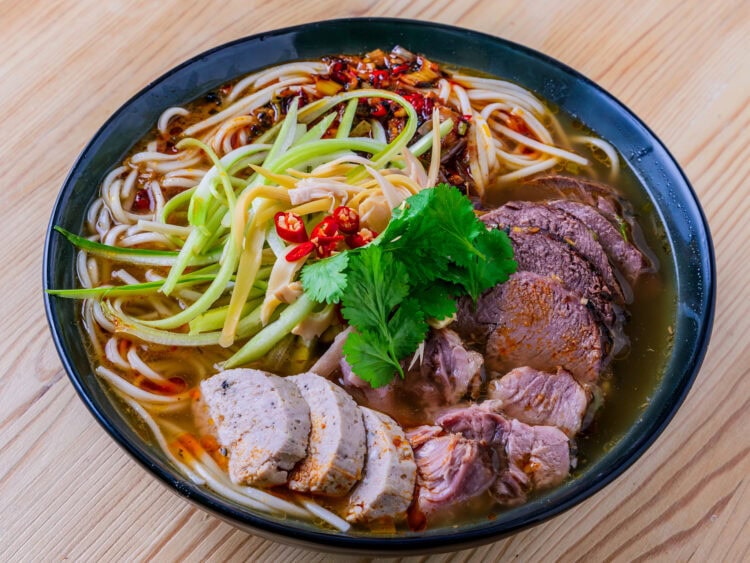A traditional recipe for the most delicious noodle soup in Vietnamese cuisine
If you like Phở, ramen and noodle soups in general, you absolutely must not miss this great classic of Vietnamese cuisine! A star of Huế and steeped in history, Bún bò is a real culinary adventure to make at home, but the result is truly worth it, believe me!
What is Bún bò Huế?
As usual, let’s break down its name. Bún tells us that the base will be rice noodles, bò that there will be beef, and finally Huế indicates its geographical origin.
In short, a rice noodle soup with beef from the city of Huế. And no, we’re not talking about Phở, it’s much more than that. Bún bò Huế, if we were to use its full name, at least in the version presented in this article, would be bún bò giò heo. So Soup (implicit) with rice noodles, beef and boiled pork.
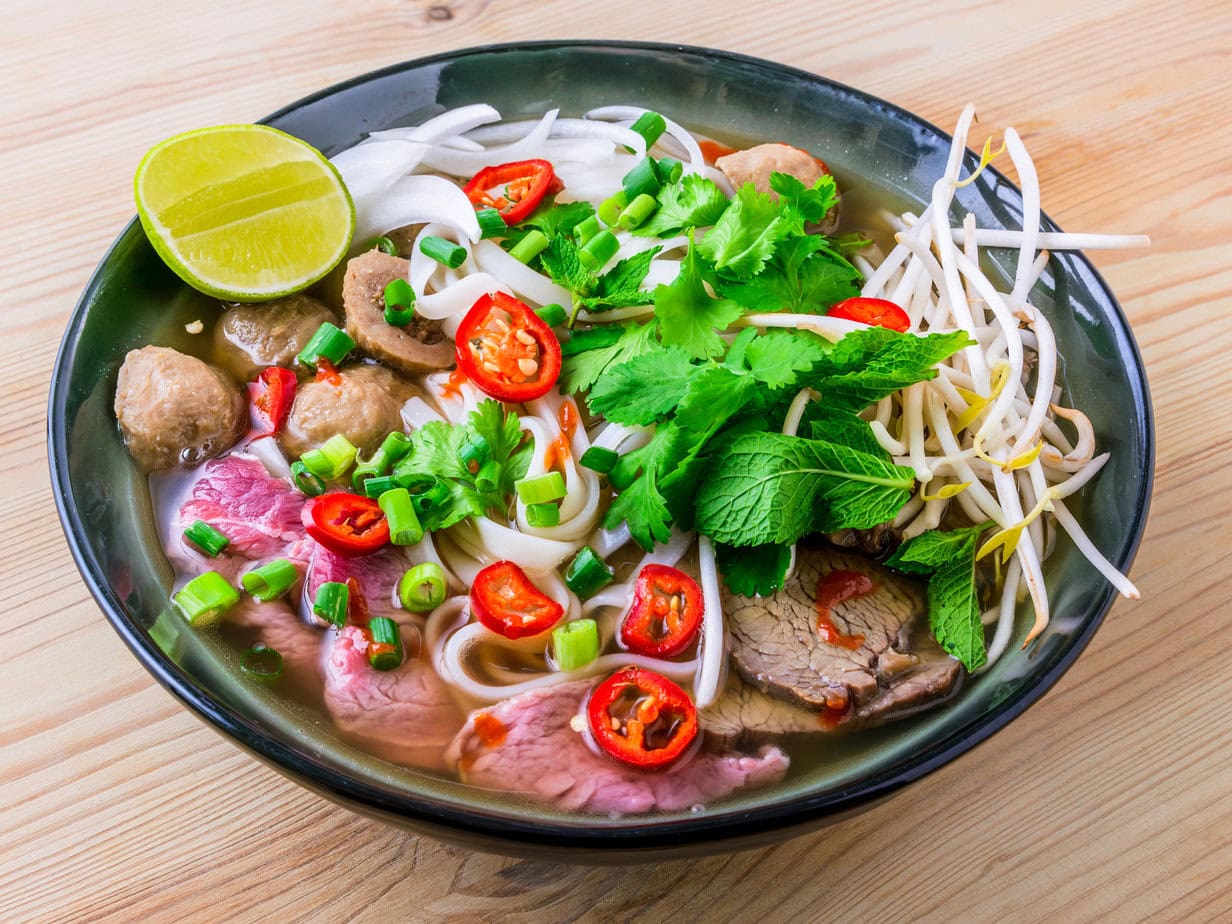
We’re starting to get closer to a more precise definition, but rather than stretching out the etymological research, let’s get straight to the point: It’s a soup, with a pork broth, rice noodles, pork, beef, and sometimes Vietnamese mortadella Chả Huế. For toppings, you’ll find homemade satay, banana flowers, water spinach, … a delicacy indeed.
A bit of history…
The origin of bún bò Huế is linked to the history of the city of Huế and its culinary traditions. According to legend, the craft of making rice noodles (bún) was invented by a young woman nicknamed “cô Bún”. When the first migrants from the North arrived in Huế under the leadership of Lord Nguyễn Hoàng, some settled in the Cổ Tháp region.
There, where everyone practiced agriculture, a young girl reportedly created the craft of making bún. A famine struck the region for three consecutive years, and some believed it was due to the anger of the gods, as the young girl had ground rice, considered the “pearl of Heaven”, to make noodles.
Driven from her village, she settled in the village of Vân Cù, where she passed on her know-how. This place became the birthplace of Huế rice noodles, renowned for their texture.
It was from these noodles that bún bò Huế began to develop, first as a dish based on pork knuckle, before being enriched with the introduction of beef under French influence.
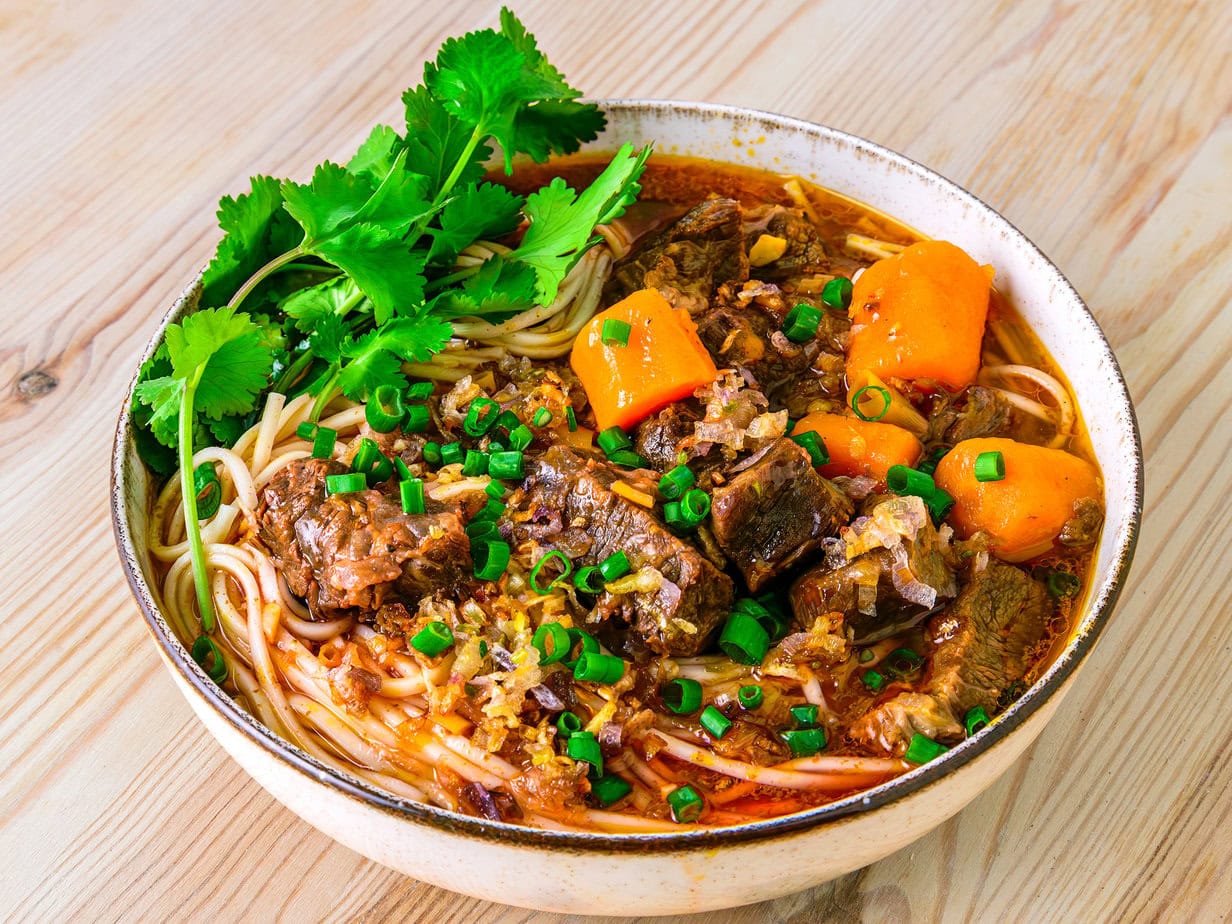
Regional variations of Bún bò Huế
After 1954, many people from Huế migrated to Saigon, bringing bún bò with them, just as migrants from the North had introduced phở. At the time, Chinese cuisine dominated with dishes like hủ tiếu (a delicious Vietnamese breakfast dish).
The arrival of bún bò and phở expanded Saigon’s culinary offerings, thus forming the “four pillars” of local cuisine: hủ tiếu, cơm tấm (broken rice), phở and bún bò. The Saigonese then revisited bún bò, giving rise to three distinct styles:
1. Traditional Huế style
This style is that of Huế migrants who brought their traditional recipe with them. The bún bò retains the authentic flavors of Huế, with ingredients such as mắm ruốc (fermented shrimp paste) and lemongrass. The bowls are often very hearty (in meat), adapted to the tastes of Saigonese who appreciate generous portions.
2. Authentic Huế style
This variation caters to customers nostalgic for the flavors of Huế. Restaurants of this style faithfully preserve the original recipe with a more intense taste of mắm ruốc and lemongrass, without adding sugar. The dishes are closer to what you’d find in Huế, perfect for those seeking an authentic experience.
3. Saigon Style
Here, the bún bò is adapted to the local preferences of Saigonese. The broth is often clearer, with little or no mắm ruốc. The toppings are generous, with giò heo (boiled pork hock) and thick slices of Vietnamese mortadella. The garnishes are varied, including banana flowers and Thai basil leaves. This style will appeal to lovers of hearty and slightly sweet dishes.
It’s good to remember that in most cases, a dish’s style will be ‘gray’ rather than black or white. Cuisine is constantly evolving, and in a country as rich and varied as Vietnam, there are thousands of variations of the same dish.
The difference between Bún bò Huế and Phở
Bún bò Huế and phở are two very different Vietnamese soups, both in terms of ingredients and preparation. The broth of bún bò Huế is made from beef and pork, with flavors of lemongrass, fried garlic, sometimes annatto seeds and shrimp paste.
In contrast, phở is distinguished by its beef or chicken-based broth, flavored with spices such as cinnamon, star anise, and black cardamom. The noodles also vary: those of bún bò Huế are thick and round, extruded directly into hot water, while those of phở are thin and flat, cut from steamed sheets.
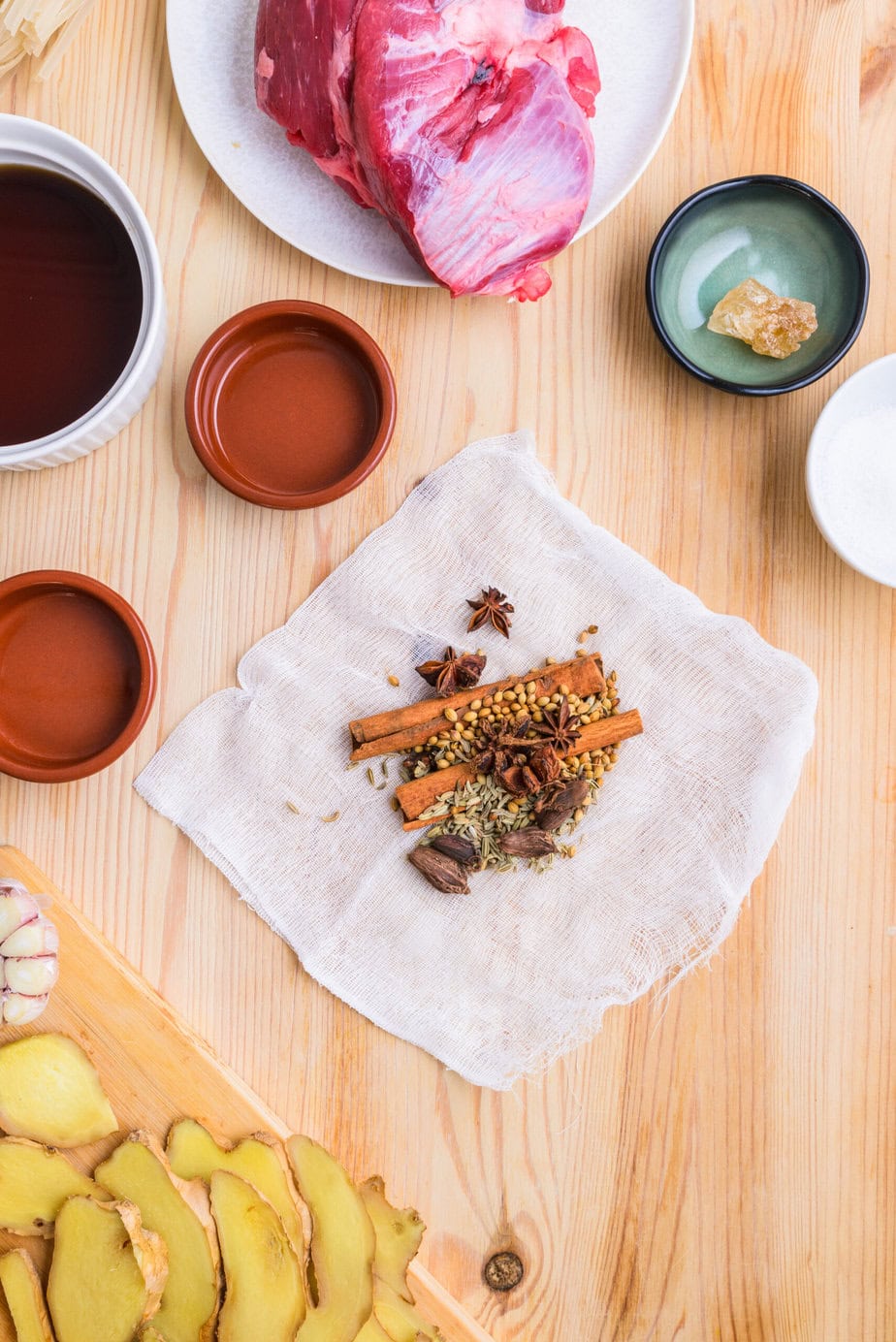
In terms of meats, bún bò Huế often includes beef shank, pork feet/hocks, and even cubes of congealed blood, while phở is served with thin slices of raw beef, flank, and sometimes tendons.
The main ingredients of Bún bò Huế
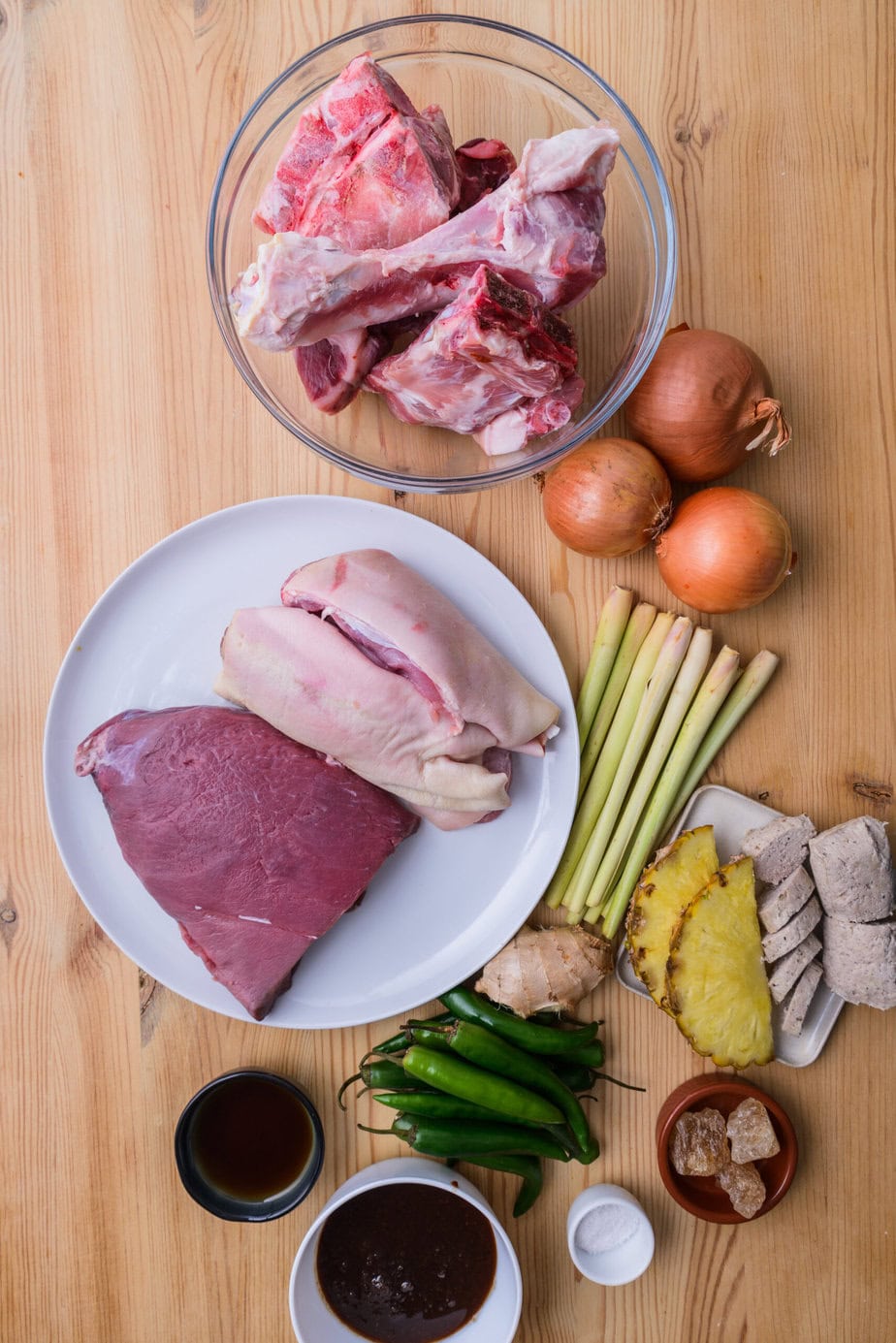
Pork hock and beef shank: if you have to choose one, take the pork hock. In this case, sauté it in the satay instead of the beef
Chả Huế: Vietnamese garlic mortadella typical of the Huế region. You can use chả lụa (ordinary Vietnamese mortadella), but you’ll lose out on flavor. Plus, it’s simple to make at home!
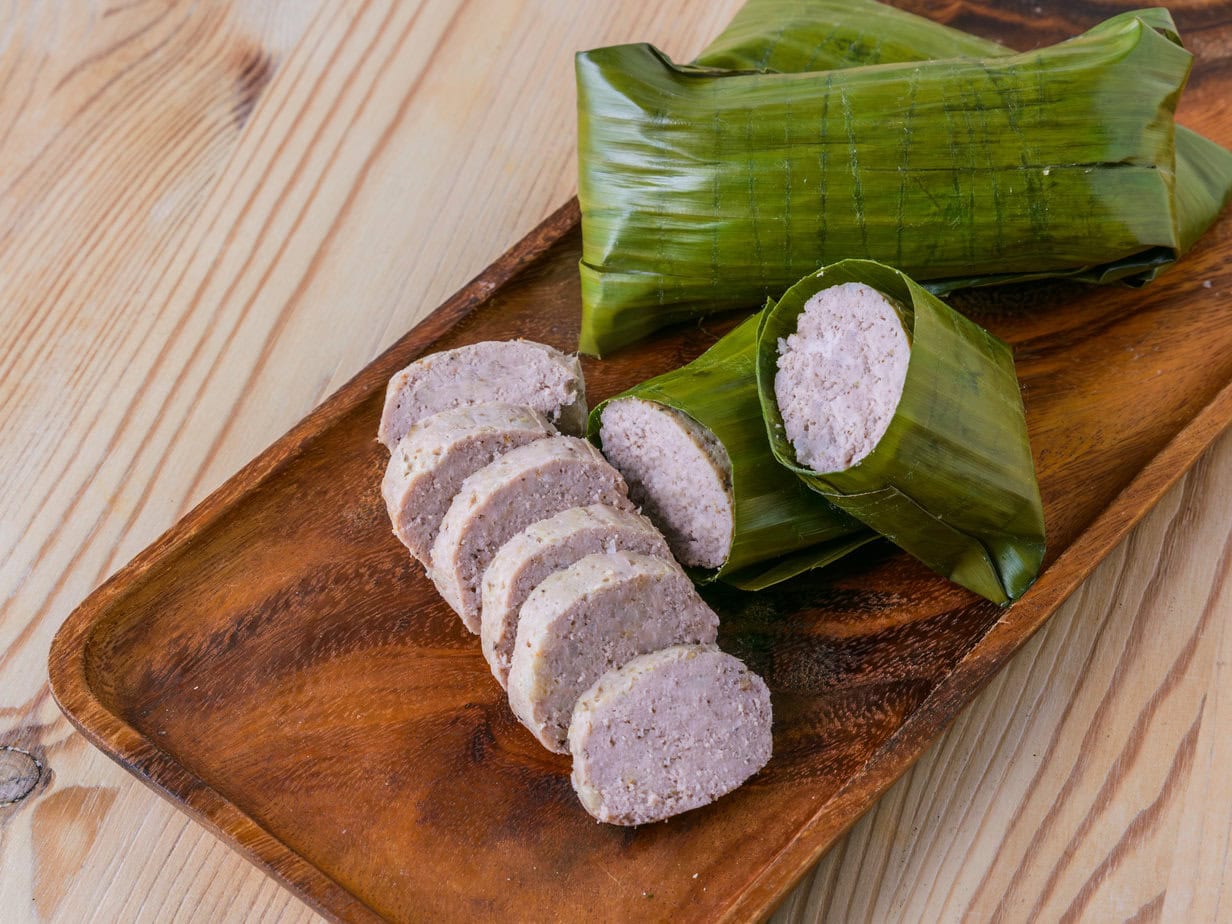
Shrimp paste: If you have no other choice, use Thai or Indonesian shrimp pastes, but I strongly advise using the Vietnamese version for an authentic taste. More specifically, in stores you’ll have a choice between Mắm ruốc and mắm tôm. You should use Mắm ruốc, which will be brown in color.
In summary, during the fermentation process for Mắm ruốc, the shrimp shells are removed and sun-dried before fermenting. For Mắm Tôm, the shells are kept and there is no sun-drying. Both use different salt ratios, and mắm tôm will be much more liquid with a stronger taste.
Water spinach: This is actually water morning glory. If you can’t find it, use pak choy
Banana flowers: Another welcome ingredient, but not mandatory. They really add a nice dimension to the taste.
Rice noodles: Ideally, you find traditional thick and round rice noodles. They sell them in the fresh and frozen sections of Asian supermarkets. Otherwise, any type of alkaline noodles (like udon, for example) will do.
Fish sauce: No, it doesn’t taste like fish, and yes, it’s essential for the flavor of the dish. I recommend the Phú Quốc brand
Lemongrass: brings a nice aftertaste and balances the flavors of the shrimp paste
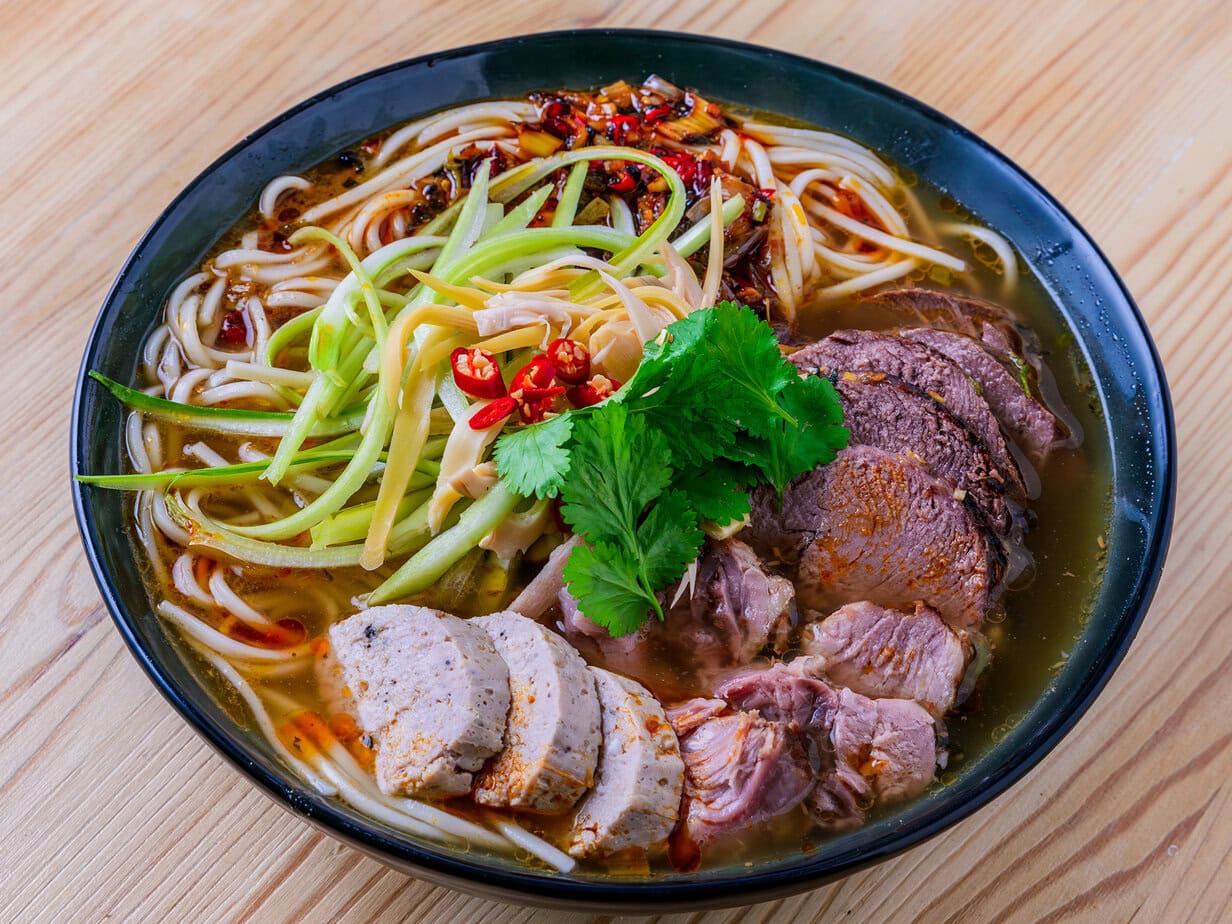
Authentic Bún bò Huế
Equipment
- Butcher’s twine for meat
Ingredients
- 2 kg of pork bones
- 700 g of pork shank boneless
- 700 g of beef shank boneless
- 100 g of green chili
- 100 g ginger
- 20 Chả Huế Vietnamese mortadella, optional
- 10 stems lemongrass
- 2 slices of pineapple preferably fresh
- 200 g of onions quartered
Seasonings for cooking the broth
- 3 tablespoons of Fish Sauce
- 2 tablespoons of Rock sugar alternatively, use palm sugar, coconut sugar, or brown sugar
- 0.5 tablespoon of Salt
- 80 g of shrimp paste preferably Vietnamese, Mắm ruốc
- 1 large bowl of ice water
To serve
- 2 banana flowers optional
- 20 stems of water spinach optional
- Lemon juice
- Water
- Rice noodles preferably not flat. Thick. Alternatively, use white alkaline noodles
Satay sauce
- Neutral cooking oil
- 200 g of red onions thinly sliced
- 200 g green onions thinly sliced
- 200 g cilantro thinly sliced
- 100 g lemongrass thinly sliced
- 100 g garlic sliced
- 100 g of red chili fresh, thinly sliced
- 1 tablespoon of cashew oil replace with sesame, walnut, or peanut oil
Instructions
Bouillon
- Rinse and drain the pork bones.2 kg of pork bones
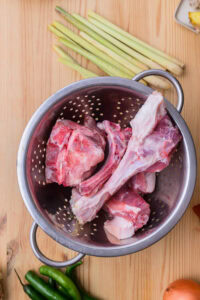
- Preheat the oven to 150 degrees in grill mode
- Put the bones in the oven for 30 min with two crushed lemongrass stalks, the other lemongrass, crushed fresh ginger, onions, pineapple slices, and chili100 g of green chili, 10 stems lemongrass, 2 slices of pineapple, 200 g of onions, 100 g ginger
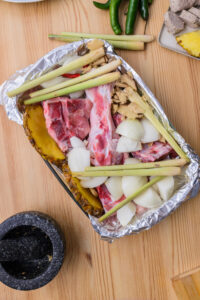
- Use butcher’s twine to wrap the beef and pork shanks well (separately)700 g of pork shank, 700 g of beef shank
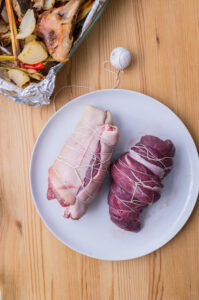
- In a large pot, bring water to a boil
- Add the lemongrass and onions10 stems lemongrass, 200 g of onions
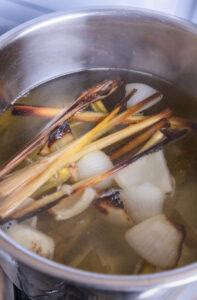
- Blanch the shanks for 2 minutes700 g of pork shank, 700 g of beef shank, 1 large bowl of ice water
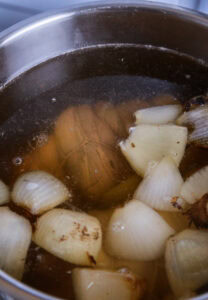
- Place them in a large bowl containing ice water
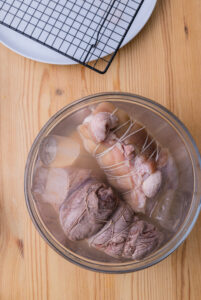
- Add the pork bones to the boiling water, blanch for two minutes2 kg of pork bones
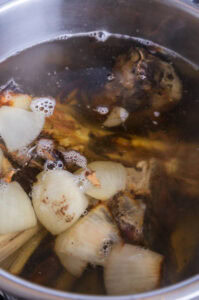
- Place in ice water as well
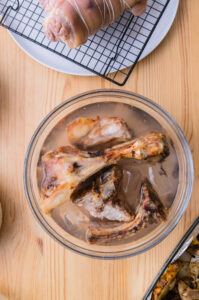
- After 10 min, remove the meats and bones and let them dry on a rack
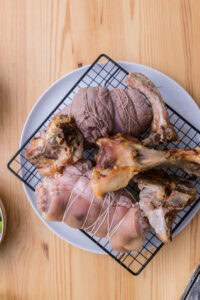
- Empty the water from the pot but keep the lemongrass and onions
Cooking the broth
- In a large pot filled with cold water, add the onions, ginger, green chili, lemongrass, and pineapple. Heat on high100 g of green chili, 100 g ginger, 10 stems lemongrass, 2 slices of pineapple, 200 g of onions, Water
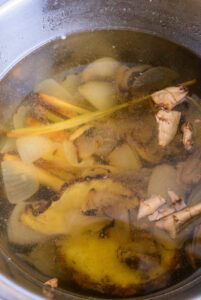
- When the water boils, add the beef shank, pork shank, and pork bones. Let it cook for a few minutes until it starts boiling again2 kg of pork bones, 700 g of beef shank, 700 g of pork shank
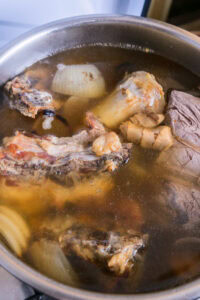
- Skim off the foam and lower to medium-low heat
- After about 1h30, remove the shanks and place in the fridge
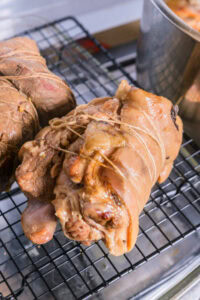
- Meanwhile, cook the cha hue if they are raw20 Chả Huế
- After 4h, remove the onion, lemongrass, ginger, and pineapple and add boiling water to compensate for what has evaporated
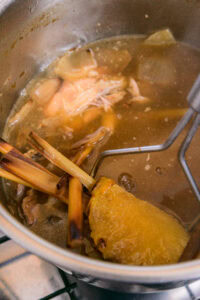
- Take some broth and put it in a bowl, dissolve the shrimp paste in it80 g of shrimp paste
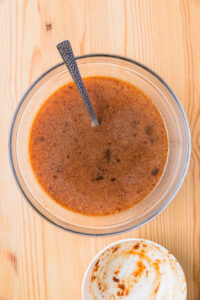
- Bring to a boil again and add the fish sauce, dissolved shrimp paste, salt, and rock sugar3 tablespoons of Fish Sauce, 0.5 tablespoon of Salt, 80 g of shrimp paste, 2 tablespoons of Rock sugar
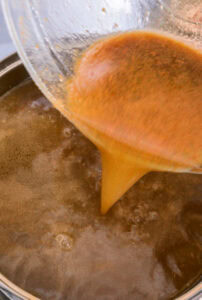
Homemade satay
- Add a little oil in a hot pan over medium-high heatNeutral cooking oil
- Add all the satay ingredients except for the chili and cashew oil. Fry until fragrant200 g of red onions, 200 g green onions, 200 g cilantro, 100 g garlic, 100 g lemongrass
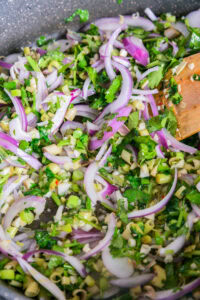
- Add the chili and cashew oil and mix well for 1 to 2 minutes100 g of red chili, 1 tablespoon of cashew oil
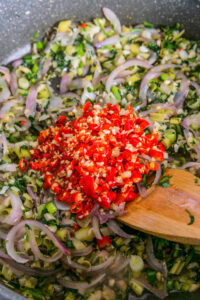
- Set aside half in a bowl for serving, leave the other half in the pan
- Sauté the drained beef shank in it over medium heat for a few minutes700 g of beef shank
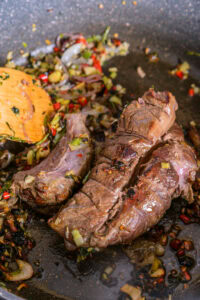
Plating
- Finely grate the banana leaves and water spinach2 banana flowers, 20 stems of water spinach, Lemon juice
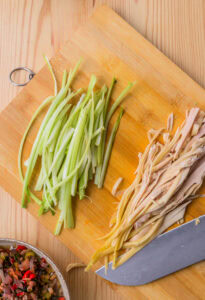
- Place in a bowl of water with lemon juice while waiting to serve to prevent them from turning black
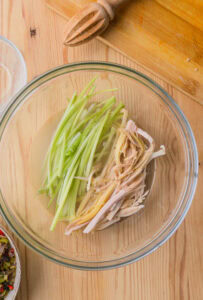
- Thinly slice the beef and pork shanks
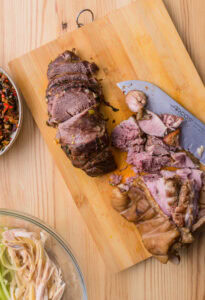
- Slice the cha hue
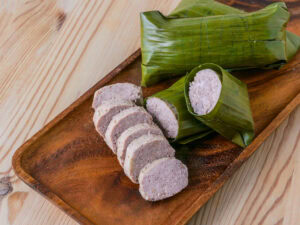
- Precook the noodles if necessaryRice noodles
- In a bowl, add the noodles, slices of beef shank and pork shank, a few slices of cha hue.
- Pour in the broth and sprinkle with some sliced green onions, shredded banana leaves and water spinach, as well as satay.
Notes
Nutrition
Culinary sources
To ensure authenticity, I had to consult numerous sources for this article. Among the most prominent were the Ho Chi Minh City government electronic newspaper, Vietnamhowhome, the Huế Department of Tourism website, explorepartsunknown, and reddit
